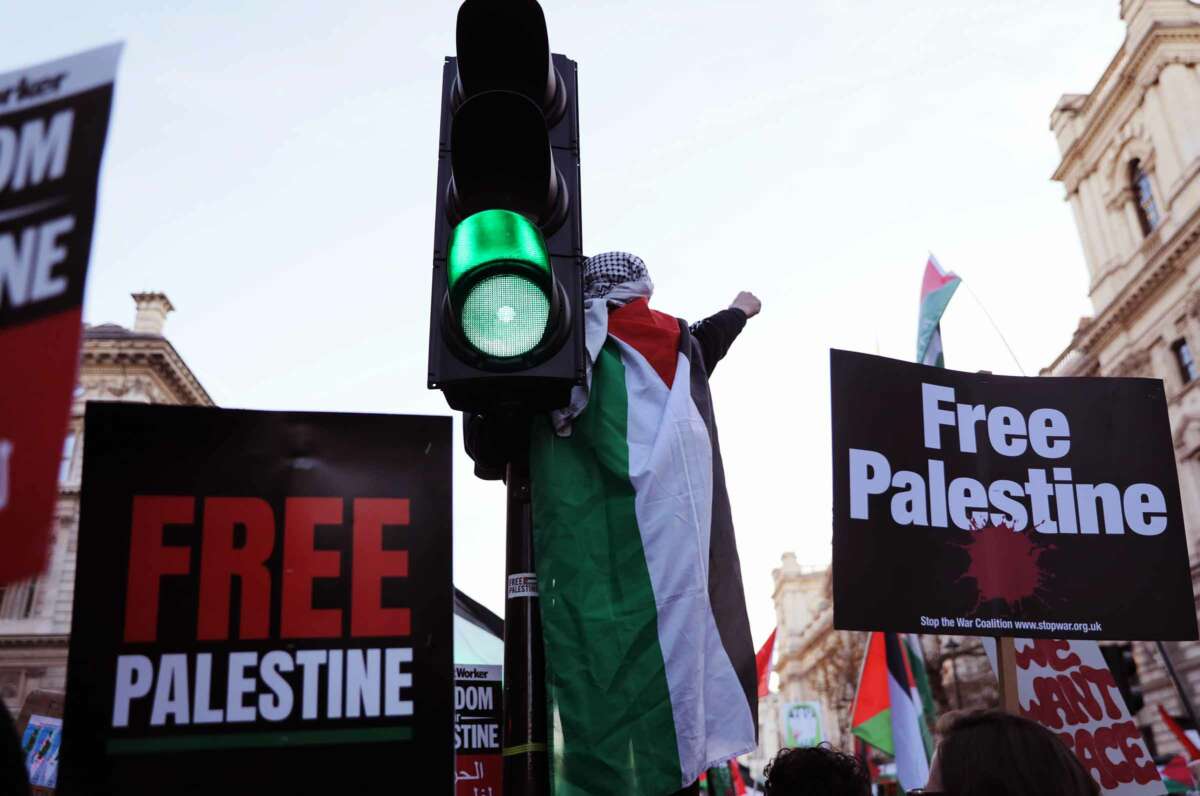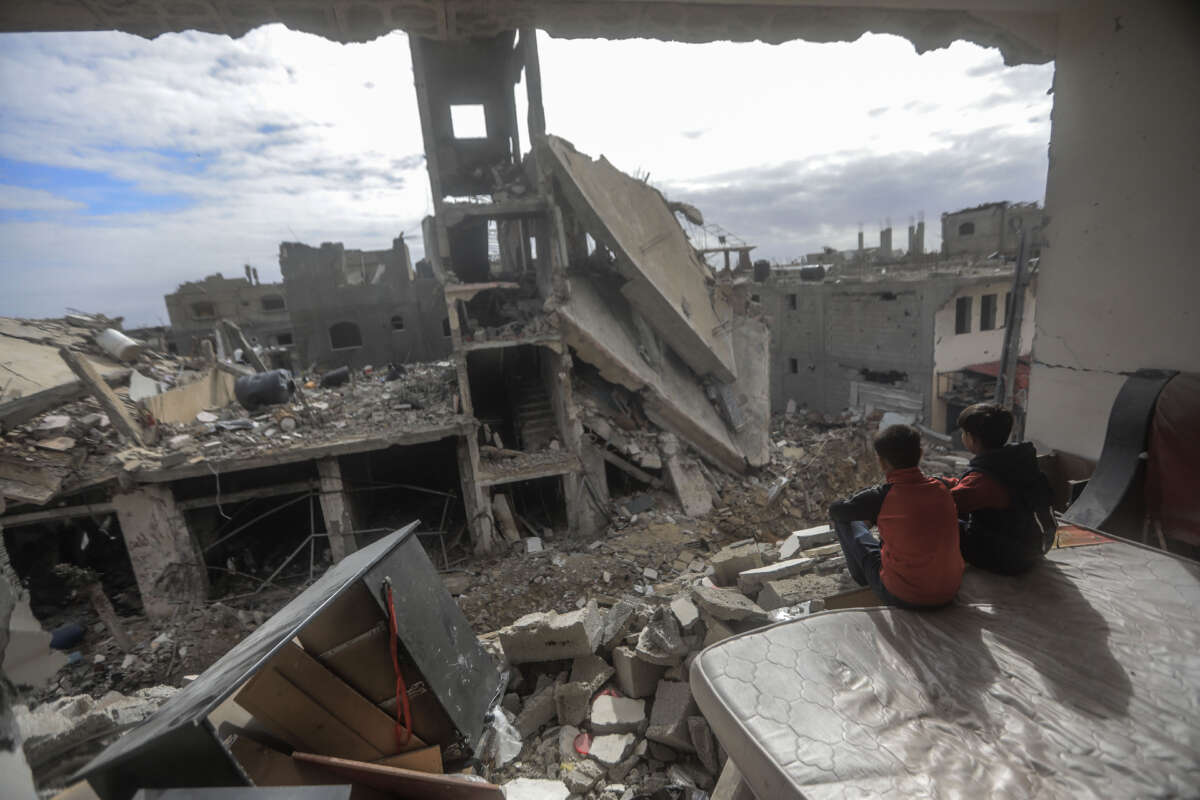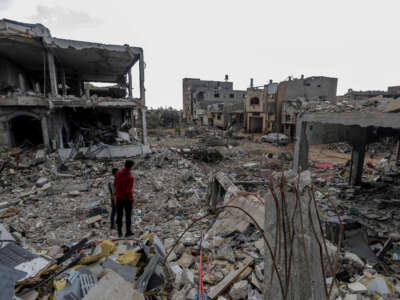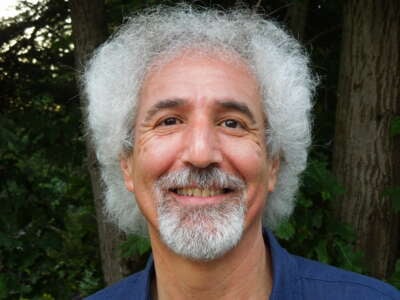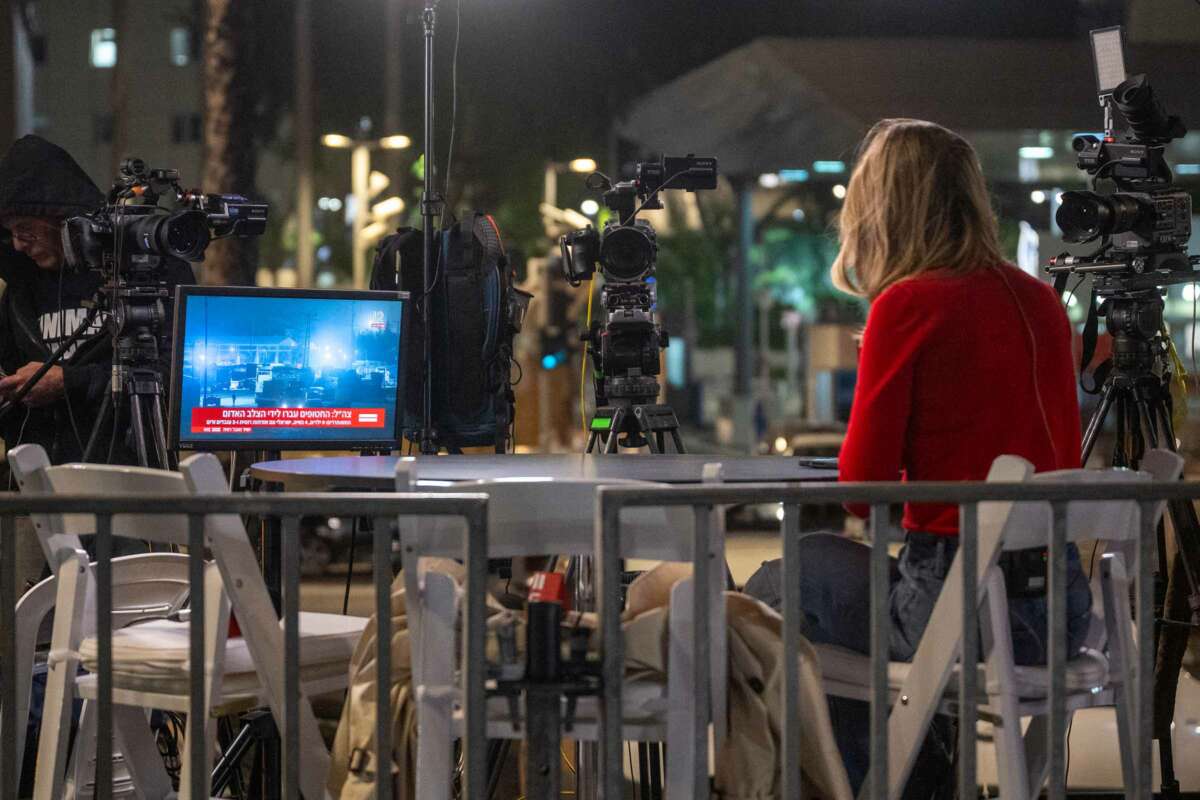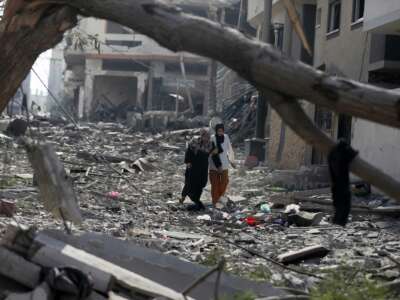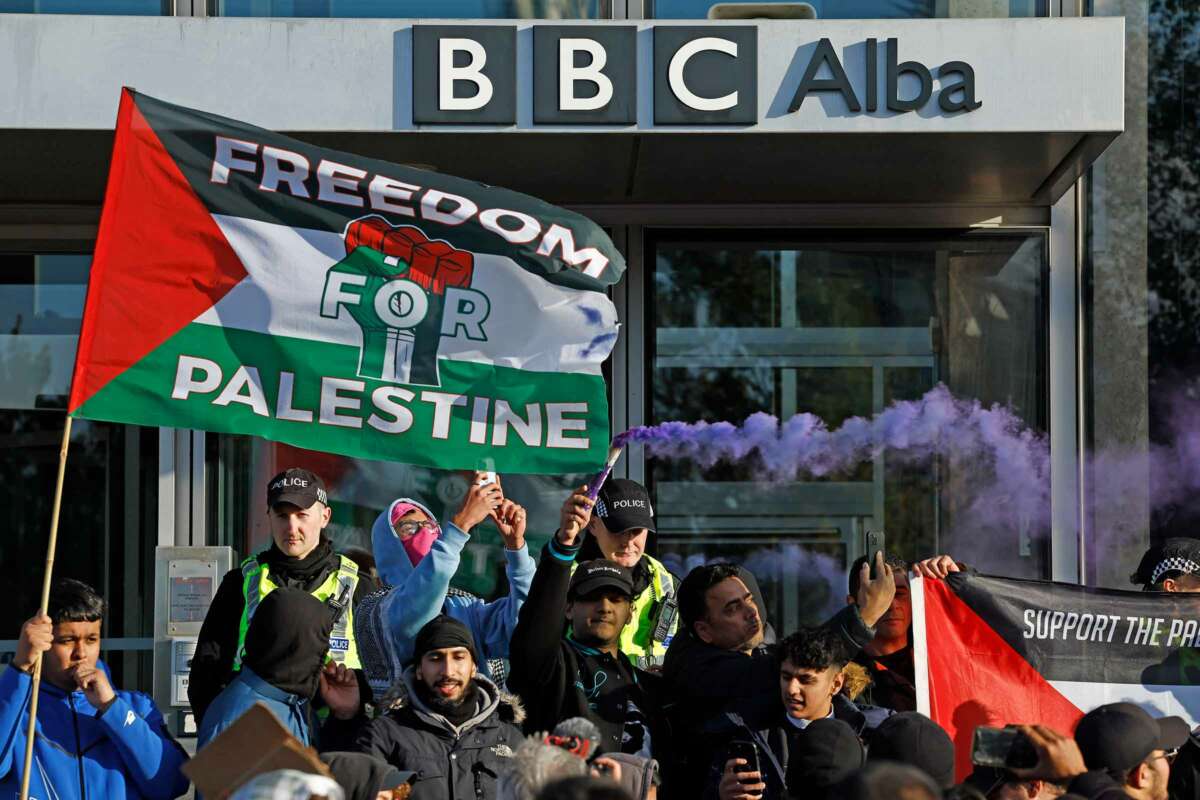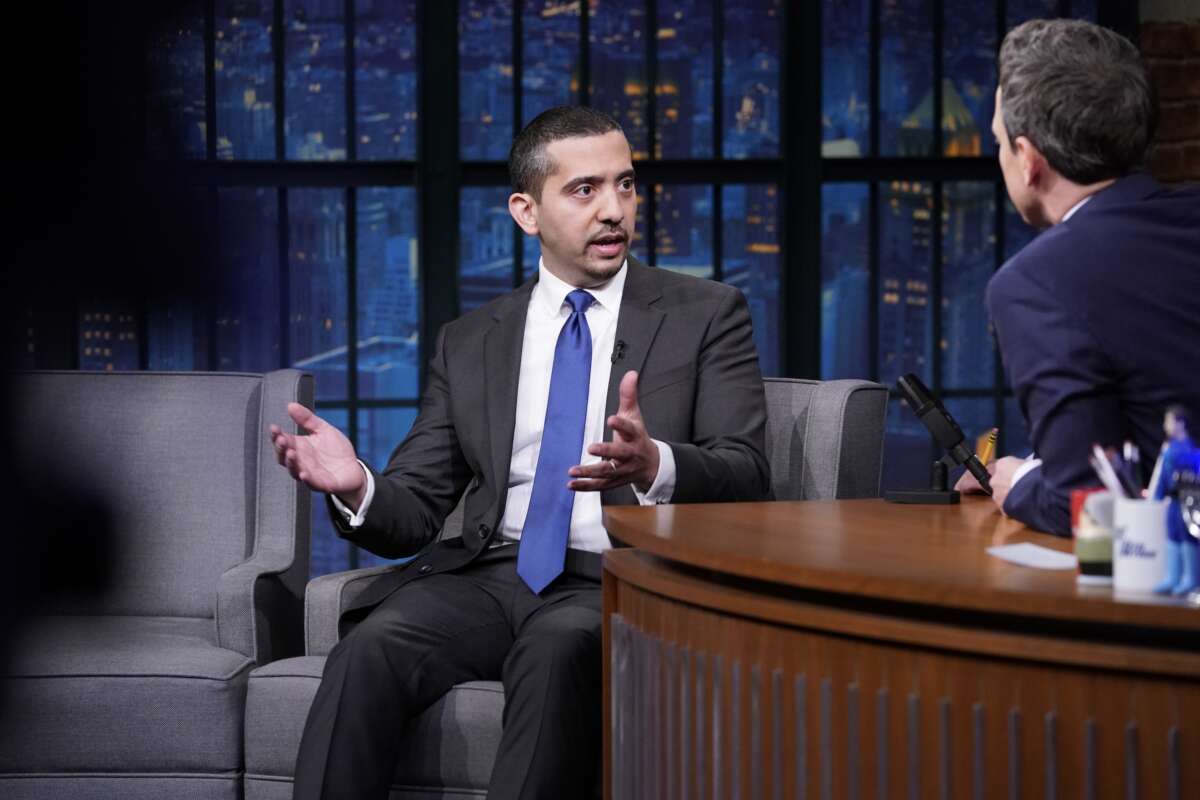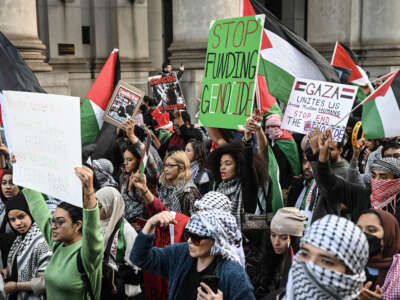The Israeli Mind and the Ultra-Right
A few days of truce allows a few days to ponder events and examine apartheid Israel’s response to Hamas’ October 7 attack. Engaging in talks and achieving mutual agreements that release captives prompts the question of why wasn’t this done much earlier, before the entire population of Gaza was subjected to brutal bombardments that killed 14000 Palestinians, displaced 80 percent, destroyed 50 percent of the buildings in Gaza city, and killed more than 50 of the captured Israelis?
From the devastation emerges a chilling vision of a new world order — a nationalist, militarist, irredentist, far-right command of governments, kept in play by obedient media that shape information and exercise mind control. Coincidental with Israel’s attack on Gaza’s population and the West Bank Palestinians, Argentina and the Netherlands elected far-right leaders who are ardent supporters of Israel’s government, adding to established far-right governments in Italy and Hungary.
Post-World War II featured 45 years of a Cold War, of Capitalism contending Communism, followed by democratic neo-liberalism extending its reach worldwide, and igniting populist movements against globalization and liberalism from ultra-conservatives and authoritarians. The responses have graduated to a worldwide battle between those who believe everyone has the right to live freely, peacefully, equally, and without oppression and those who compose a ‘might make right’ force that acts with license to commit genocide. Revelations from an Israeli intelligence ministry document and a pronouncement by the director of the New York office of the UN High Commissioner for Human Rights certify the intended genocide.
Although not entirely authoritative, the Asia Times has discovered “What Gaza might look like ‘the day after’ the war.”
Less than a week after Hamas’s devastating attacks on October 7, Israel’s intelligence ministry produced a chilling document. It advocated that Israel remove all of Gaza’s Palestinian population and forcibly resettle them in the Egyptian Sinai Peninsula. What is more likely is that Israel will indefinitely occupy parts of Gaza, while seeking to eschew responsibility for civilian governance.
Craig Mokhiber, director of the New York office of the UN High Commissioner for Human Rights, resigned and said, “The current wholesale slaughter of the Palestinian people, rooted in an ethno-nationalist colonial settler ideology, in continuation of decades of their systematic persecution and purging, based entirely upon their status as Arabs … leaves no room for doubt that this is a text book case of genocide.”
Hamas’ attack was more due to failure of Israeli border security than the well-prepared and well-coordinated Hamas militia. Failure has consequences and attempts to circumvent consequences and properly address failure may lead to greater failures, and this has happened. A rational government that placed its people before embarking on a mission of ‘might make right’ and ’might cannot fail’ would have:
(1) Operated behind the scenes and obtained agreement to release all captives. Each day that women and children are captive is a day of mental and physical deterioration leading to lifelong illnesses and possible death.
(2) Immediately secured the border in a firm and organized manner so there is no possibility of another Hamas attack.
(3) Carefully ascertained the reasons for the attack, determined what may follow, and learned if the attack might be part of a larger campaign that includes other adversaries. Gather the facts before facing the facts.
News reports have not shown that Israel prioritized captive release and firm border security before waging destruction.
The media uses the word ‘war’ instead of ‘destruction.’ Where is the war, where is anybody able to contest Israel’s unilateral actions? Buildings and civilians do not fight and wage war; they are victims of destruction. Why does Israel wage destruction? The answer is obvious ─ Israel considered Hamas’ vicious attack as an opportunity to advance its agenda of physically and psychologically destroying the Palestinians. Keeping the conversation on the Hamas massacre alive while Israel mobilized its forces for its intended massacre and constantly referring to the brutality of the hostage-taking suppressed complaints to Israel’s genocidal tactics. But not for long. International protests to Israel’s deranged actions and an internal outcry at the neglect of the hostages forced Netanyahu to grant a temporary truce and trade captives.
To give a twisted rationale to Israel’s genocidal plan, Israeli officials and its worldwide media companions embarked on a media campaign that dehumanized the Palestinians and aroused sympathy for Israeli suffering. The Israeli propaganda machine worked quickly, using rumors and unverified stories to replace demon ISIS with new demon Hamas. Stop here for a moment of contention. Does the brutality of Hamas’ vicious attack permit unverified stories to circulate and prevent the airing of narratives that contradict the accepted narratives?
CNN commentator, Erin Burnett, interviewed Yasmin Porat, an Israeli woman taken hostage. Ms. Porat related her witnessing the killings, being taken hostage, and being used as a human shield, but not really, she wasn’t a shield for a gun-toting killer; Yasmin Porat shielded a defenseless Hamas operative from being killed by Israeli forces before surrendering. Cutting the interview at its most crucial point, when Ms. Porat was prepared to reveal information inconsistent with published reports demonstrated how the media manipulates the message. In a radio interview, which can be heard below, the Israeli woman gave additional details of her capture.
AnIsraeli woman gave details of her capture at msn.com, which summarized her radio interview.
Yasmin Porat spoke in an exclusive interview about the events she witnessed. Amid the chaos of heavy crossfire and the ominous sound of tank shells exploding, Porat made a shocking claim: Israeli forces didn’t spare anyone in their path. “They eliminated everyone, including the hostages,” Porat said during her conversation with Israeli radio.
Her account paints a picture where the hostages, instead of being rescued, were caught in a deadly crossfire instigated by the very forces meant to save them. The event turned from a potential rescue operation to an unfortunate catastrophe where lives from both sides were lost.
In a surprising revelation, Porat also mentioned that Palestinian fighters treated the hostages with humanity. Despite the volatile situation, they offered the hostages hope, hinting at a safe passage to Gaza.
This act of compassion stands in stark contrast to the later chaos where the hostages found themselves caught between warring factions. Yet, the revelation hasn’t found widespread coverage. Porat’s testimony mysteriously disappeared from the “Haboker Hazeh” program, leading to rampant speculation about censorship.
Israeli official interpretation of the events made the Gazans who voted for and supported Hamas equally guilty in the slaughter and deserving equal retribution. By similar logic, this makes the slaughtered Israelis who voted for the present government, equally guilty in the destruction of the Palestinians. Although Hamas attacked and kidnapped Asian workers, and Hamas would have acted the same if Israelis were Mormons, Israel insisted Hamas was intent on committing genocide of world Jewry. The Hamas military wing of supposed 50,000 warriors, which has few armored vehicles, no air force, no naval force, and already demonstrated that it cannot penetrate Israel for more than a few kilometers without being demolished, is considered able to defeat the fourth most powerful military in the world and destroy world Jewry. Meanwhile, Israel’s military is committing genocide against the Palestinian people, and “powerful” Hamas is unable to prevent the catastrophe.
Hamas committed a despicable massacre and deserves the most serious condemnation. Israel commits continuous massacres plus human crimes plus human rights violations that daily impinge on the survival of the Palestinians. Add them up and Israel has committed a massacre that has a beyond comprehension magnitude.
The physical nature of the genocide is apparent but its numbers are relatively small, not what is expected in a genocide. Not apparent is the psychological genocide — the anxiety Israel creates for the Palestinians, the violence that causes traumas and deadens spirit and emotions. This is the major component of the genocide. Two examples:
After the release of Palestinians held in Israel’s prisons, the Israeli military forbade the Palestinian families to celebrate. Denying expression of joy after internalizing grief maintains the grief. No relief for the suffering.
Randomly, Israeli soldiers will stop an auto, take the driver, beat him senselessly, and throw him down on the road; the purpose being to terrorize Palestinians, show they are powerless, cannot control their lives, and have nobody to protect them. This practice enraged one young Palestinian who suffered a random beating. The next day he shot dead an Israeli soldier in what was described as a terror attack. The Israeli military followed the ‘“terror attack” with their usual practice of demolishing the “terrorist’s “ home, causing more trauma to those in the extended family.
After tying together the usual spurious charge of anti-Semitism, substituting killings of Jews for killing of Israelis, and associating the violence with the WWII Holocaust (worst attack on the Jewish community since the Holocaust), the pro-Israel contingent introduced a new sorrowful element to grab the twisted sensibilities of their legions of dishonor. Israel, which has the backing of the most powerful forces in the universe and gets more attention than other nations, is alone, nobody considers Jewish suffering, and the Jews are the lonely people of history.
Yossi Klein Halevy, an American-born Israeli author and journalist, who led a confusing and peripatetic intellectual life, had an initial attraction to the extremist Rabbi Meir Kahane, eventually supported the two-state solution, and criticizes the Israeli settler movement, wrote an article titled, The Lonely People of History in the November 16, 2023 edition of the Times of Israel. The article received excessive attention and mass circulation. Some excerpts that describe the Israeli mind.
But now we are at one of those defining moments in Jewish history when we find ourselves at a moral disconnect with much of the international community. As we struggle to absorb the enormity of the October 7 massacre and to confront a global wave of antisemitism, the trauma of aloneness has returned.
Instead of delving into self-pity and victimization, Halevi should find reality. The moral disconnect comes from Halevi’s cohorts’ refusal to recognize and halt the oppression of the Palestinian people – resolve that situation and the “global wave of antisemitism” will disappear.
During the Second Intifada, when the IDF fought suicide bombers in Palestinian towns and villages, an exasperated Kofi Anan, then secretary-general of the UN, demanded: “Can the whole world be wrong and only Israel is right?” Israelis unhesitatingly replied: Absolutely.
A sure way to become alone.
Speaking at the gravesite, Yonadav’s brother called on the government to resist world pressure and persevere. He invoked Israel’s first prime minister: “David Ben-Gurion said that it doesn’t matter what the gentiles say, only what the Jews do.”
Really? Can any rational person accept David Ben-Gurion’s bigoted and egocentric statement?
More disconcerting than Halevi’s separatist attitude that invites exclusion were comments to the article that indicate paranoia, delusion, and mental aberration.
“We are always alone. On a good day, we are tolerated. When we suffer enough, we receive sympathy from some. But accepted? Never.”
“When Jews suffer, nobody sees it. That is going for 2 thousand of years. And suddenly Israelis do not have rights to protect themself. Just be quiet and do not resist! This is a new Muslim norm!
The Israeli mind
It is impossible for a rational and thoughtful human being to be unable to recognize that Israel intends to totally destroy the Palestinian community. Where will the Gazans go after hostilities end? Almost all of North Gaza, which is mainly Gaza City, is destroyed. There will be few places to live, less agricultural land to provide food, no work to find, few places to shop, nowhere to relax, and fewer schools to attend. The already crowded Gazan prison will have six times the number of people in a square mile. The precarious life of a Gazan will become many times more precarious. What mind prepares a future of pain and anguish leading to death for a community of millions? It is a distorted mind, characterized by the actions of Jewish settlers in the West Bank. From https://www.972mag.com/hebron-area-settler-violence-expulsions/.
At 10 p.m. on Oct. 13, I received a phone call from Amer Abu Awad, a Palestinian resident of Khirbet Al-Radeem, a small rural community south of Hebron in the occupied West Bank. “The settlers attacked me,” he told me in a frightened voice. “Some of them were wearing army uniforms.”
“They assaulted me, beat my elderly father, pushed him to the ground, dragged him through the puddles, and pointed weapons at us,” Abu Awad continued, pausing to catch his breath. “They said I had to leave by morning, or my family and I will be finished.”
Early the next day, Abu Awad called me again. “I want to leave, but the roads are closed.” After hours of interventions, he managed to escape with his family of five along with his flock of sheep to the town of As-Samu, leaving behind his house, furniture, livestock barracks, and grain for the sheep. Abu Awad and his family had to carry all their belongings by foot; the Israeli army would not allow any vehicles to enter the area.
Palestinians in the rural communities surrounding Hebron live marginal and peaceful lives. They need assistance to enrich their living standard. Instead of giving assistance, the Jewish settlers, strangers to the land and for no valid reason, push the marginal Palestinians to desperation, hopelessness, and impoverishment, leaving them bare of means to survive, all done with blessing from the apartheid Israeli government.
Incidents of bodily injury to Palestinians in the United States indicate how pro-Israel media foments terrorism. In the south Brooklyn neighborhood of Bay Ridge, men, waving Israeli flags, attacked a Palestinian man, three Palestinian students were shot in Vermont and a Muslim-American child was stabbed to death in Illinois by a man enraged against Muslims.
Those who demonstrate against the genocide are accused of anti-Semitism; those who support the genocide are defending the Jews who commit the genocide. Students for Justice in Palestine has been banned or suspended by Brandeis, Columbia, and George Washington University. Columbia University suspended a student chapter of Jewish Voice for Peace (JVP) after JVP held demonstrations that Columbia said, “repeatedly violated university policies.” Universities are defending the initiators of genocide and protecting those who approve of the genocide.
Getting it backward does not lead to a path forward. Permitting right-wing extremists to engineer a front-seat genocide cannot be accomplished without thought control and threatens all civilization. The Israeli Jews and their Western supporters must be challenged, stopped, and removed from positions of power. One manner of challenge spreads information that reveals the truth of the genocide. Tough to find when Israel blocks and assassinates reporters in Gaza and the West Bank.
Al Jazeera manages to have on-site correspondents and receives videos, images, and reports from locals. Click on LIVE and receive Al Jazeera TV.
Another means is economic boycott, guidance from the BDS movement and other institutions that highlight companies that actively support Israel. BDS is reached at here; another list is available from Innovative Minds.
Keep it up, support the demonstrations, spread the word, and shout it loud,
STOP THE GENOCIDE OF THE PALESTINIAN PEOPLE
Dan Lieberman publishes commentaries on foreign policy, economics, and politics at substack.com. He is author of the non-fiction books A Third Party Can Succeed in America, Not until They Were Gone, Think Tanks of DC, The Artistry of a Dog, and a novel: The Victory (under a pen name, David L. McWellan). Read other articles by Dan.
